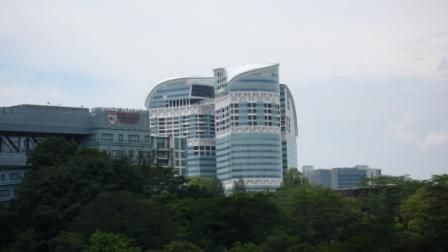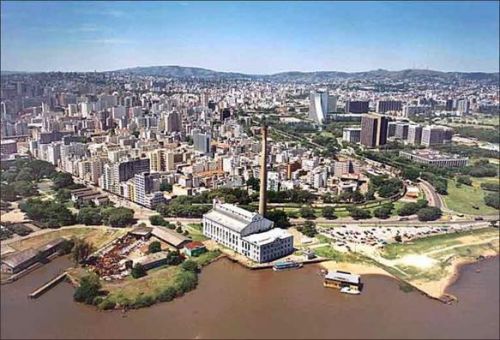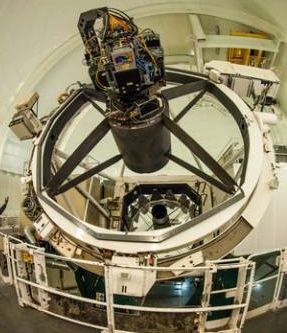News

24/07/2015
CVC: 20 Years Making Images Meaningful
CVC: 20 Years Making Images Meaningful
The Computer Vision Center (CVC) located in the campus of the Universitat Autònoma de Barcelona (UAB), which is the strategic Barcelona Synchrotron Park partner, celebrates its 20th anniversary.
Computer vision is a branch of artificial intelligence that aims at creating machines able to understand images. This requires complex algorithms that can link what the machine sees to a given context: with the booming of Big Data, these immense data bases generated by all the things connected to the Internet, computer vision enjoys a veritable golden age.
The 4 lines of research of CVC and its 130 researchers and technicians are: 1) healthcare and welfare; 2) culture, experience and consumption; 3) mobility and transport; 4) advanced manufactory.
Referring to the mobility and transport sector as an example, the project of an autonomous car developed by the Advanced Driver Assistance Systems group (ADAS) can be mentioned, among others: this car, which already travels on the UAB campus, uses computer vision to move: compared with other projects such as the Google’s one that uses expensive laser-based sensors, the CVC project just requires normal cameras.
Congrats!
Image: the autonomous car from the ADAS/CVC research group
Computer vision is a branch of artificial intelligence that aims at creating machines able to understand images. This requires complex algorithms that can link what the machine sees to a given context: with the booming of Big Data, these immense data bases generated by all the things connected to the Internet, computer vision enjoys a veritable golden age.
The 4 lines of research of CVC and its 130 researchers and technicians are: 1) healthcare and welfare; 2) culture, experience and consumption; 3) mobility and transport; 4) advanced manufactory.
Referring to the mobility and transport sector as an example, the project of an autonomous car developed by the Advanced Driver Assistance Systems group (ADAS) can be mentioned, among others: this car, which already travels on the UAB campus, uses computer vision to move: compared with other projects such as the Google’s one that uses expensive laser-based sensors, the CVC project just requires normal cameras.
Congrats!
Image: the autonomous car from the ADAS/CVC research group

17/07/2015
Presentation of the Industrial Ring 4.0 Project
Presentation of the Industrial Ring 4.0 Project
In 2006, 6 companies operating in Barcelona, among them SENER headquartered in the Barcelona Synchrotron Park (BSP), participated to the creation of the Industrial Ring, a telecommunication network that offers companies a secure and fast tool to share data from design or simulation-based calculations. The Industrial Ring is operated by the i2cat Catalan center for research and innovation in the Internet and currently gathers about 80 companies, mainly from the automotive sector.
Based on the merger of automation and digitization of production processes, including the Internet of Things and the Internet of Services, the industrial sector experiences a revolution, maybe the fourth one following those of motor, electricity and electronics, successively. With the Smart America initiative or the Industrie 4.0 program, the United States and Germany, respectively, clearly make the Internet a key tool to reactivate their industries.
In this context, the Industrial Ring 4.0 initiative, which is led by i2cat and was presented on July 13, aims at making the current Industrial Ring a collaborative platform between users and providers to give companies all the services the Internet can offer. Among other functionalities, Industrial Ring 4.0 initiators mention secure communication, data storage, monitoring, data control and analysis, etc.
Phase 1 will be focused on automotive, advanced manufacturing and bioinformatics sectors and is scheduled to be operative by the end of 2016. Phase 2 will be implemented after an evaluation of Phase 1 and will consist in extending the initiative to more sectors: the objective is to increase the number of companies involved from the current number (80) to some thousands.
Based on the merger of automation and digitization of production processes, including the Internet of Things and the Internet of Services, the industrial sector experiences a revolution, maybe the fourth one following those of motor, electricity and electronics, successively. With the Smart America initiative or the Industrie 4.0 program, the United States and Germany, respectively, clearly make the Internet a key tool to reactivate their industries.
In this context, the Industrial Ring 4.0 initiative, which is led by i2cat and was presented on July 13, aims at making the current Industrial Ring a collaborative platform between users and providers to give companies all the services the Internet can offer. Among other functionalities, Industrial Ring 4.0 initiators mention secure communication, data storage, monitoring, data control and analysis, etc.
Phase 1 will be focused on automotive, advanced manufacturing and bioinformatics sectors and is scheduled to be operative by the end of 2016. Phase 2 will be implemented after an evaluation of Phase 1 and will consist in extending the initiative to more sectors: the objective is to increase the number of companies involved from the current number (80) to some thousands.

13/07/2015
New International Success for B-Barcelona Consulting /BGC
New International Success for B-Barcelona Consulting /BGC
Data Centres (DC) are one of the strategic priorities of the Barcelona Synchrotron Park (BSP). By the way, DCs from IBM (2012), T-Systems (2013) and SILC-Immobles (2012 and 2015) are already operative in the park.
In addition to these DCs, BSP completed this year a new 42,000 sq.m. plot specially designed to host DCs and provide companies with district cooling, six telecommunication networks installed etc.
In this project BSP draws on the technology assessment of B-Barcelona Consulting/BGC, an engineering company specialized, among other things, in the design of mission critical infrastructures and the implementation of energy efficiency strategies as free cooling, direct-to-chip water cooling etc.
B-Barcelona Consulting/BGC is headquartered in Barcelona and Singapore and runs part of its business in South-East Asia. It has been working since 2013 on the design and construction of the National Supercomputing Centre leaded by A*STAR, the Singaporean agency for science, technology and research. Very recently B-Barcelona Consulting/BGC was selected by the MDeC Malaysian telecommunication agency to assess the government on the design of a new 2,800 hectares DC park in southern Malaysia. Congratulations!
Image: National Supercomputing Centre building, Singapore
In addition to these DCs, BSP completed this year a new 42,000 sq.m. plot specially designed to host DCs and provide companies with district cooling, six telecommunication networks installed etc.
In this project BSP draws on the technology assessment of B-Barcelona Consulting/BGC, an engineering company specialized, among other things, in the design of mission critical infrastructures and the implementation of energy efficiency strategies as free cooling, direct-to-chip water cooling etc.
B-Barcelona Consulting/BGC is headquartered in Barcelona and Singapore and runs part of its business in South-East Asia. It has been working since 2013 on the design and construction of the National Supercomputing Centre leaded by A*STAR, the Singaporean agency for science, technology and research. Very recently B-Barcelona Consulting/BGC was selected by the MDeC Malaysian telecommunication agency to assess the government on the design of a new 2,800 hectares DC park in southern Malaysia. Congratulations!
Image: National Supercomputing Centre building, Singapore

02/07/2015
Creation of the Barcelona Institute of Science and Technology
Creation of the Barcelona Institute of Science and Technology
Six of the top research centres in Catalonia come together to pursue a joint scientific endeavour by setting up The Barcelona Institute of Science and Technology
The centres involved are: the Centre for Genomic Regulation (CRG); the Institute of Chemical Research of Catalonia (ICIQ); the Catalan Institute for Nanoscience and Nanotechnology (ICN2); the Institute of Photonic Sciences (ICFO); the High Energy Physics Institute (IFAE); and the Institute for Research in Biomedicine (IRB Barcelona).
Two of them (ICN2 and IFAE) are located on the campus of the Universitat Autònoma de Barcelona, a Barcelona Synchrotron Park strategic partner.
The Barcelona Institute is a scientific initiative that seeks to foster interdisciplinary research, to leverage its scientific impact, and to position itself among the leading European institutions. The Barcelona Institute emerges as one of the leading scientific institutes in Europe, ranking fourth in the number of ERC grants awarded per volume of researchers. The Barcelona Institute will promote joint research strategies, transfer of technology, and graduate programs.
In addition to Prof. Tarrach, chair of the Barcelona Institute who also chairs the European University Association (EUA), Profs. Joan Massagué (Sloan Kettering Institute), Ignacio Cirac (Max Planck Institute), Miquel Salmeron (UC Berkeley) and Sergi Verdú (Princeton University) also serve on the Board of Trustees.
The centres involved are: the Centre for Genomic Regulation (CRG); the Institute of Chemical Research of Catalonia (ICIQ); the Catalan Institute for Nanoscience and Nanotechnology (ICN2); the Institute of Photonic Sciences (ICFO); the High Energy Physics Institute (IFAE); and the Institute for Research in Biomedicine (IRB Barcelona).
Two of them (ICN2 and IFAE) are located on the campus of the Universitat Autònoma de Barcelona, a Barcelona Synchrotron Park strategic partner.
The Barcelona Institute is a scientific initiative that seeks to foster interdisciplinary research, to leverage its scientific impact, and to position itself among the leading European institutions. The Barcelona Institute emerges as one of the leading scientific institutes in Europe, ranking fourth in the number of ERC grants awarded per volume of researchers. The Barcelona Institute will promote joint research strategies, transfer of technology, and graduate programs.
In addition to Prof. Tarrach, chair of the Barcelona Institute who also chairs the European University Association (EUA), Profs. Joan Massagué (Sloan Kettering Institute), Ignacio Cirac (Max Planck Institute), Miquel Salmeron (UC Berkeley) and Sergi Verdú (Princeton University) also serve on the Board of Trustees.

26/06/2015
A Delegation From Porto Alegre Visits the Barcelona Synchrotron Park
A Delegation From Porto Alegre Visits the Barcelona Synchrotron Park
A delegation from Porto Alegre, Brazil, came especially to Barcelona during two days to know about science and technology parks and their role in the economic development.
11 people from administration, research and corporate worlds spent June 23 discovering the ALBA synchrotron and UAB university territory and its three parks: PTV, PRUAB and Barcelona Synchrotron Park (BSP).
Together, these three parks cover the entire value chain that aims at transforming basic research into economic growth through technology transfer, new companies incubation and support etc. in a dense business environment made of more than 10,000 companies within a 5 km radius of ALBA.
The delegation took advantage of the visit paid to BSP to discover both the ALBA synchrotron and the ASCAMM-EURECAT technology center that hosts the headquarters of EURECAT, the result of the merger of the six Catalan technology centers that have been in place heretofore.
Image: Porto Alegre
11 people from administration, research and corporate worlds spent June 23 discovering the ALBA synchrotron and UAB university territory and its three parks: PTV, PRUAB and Barcelona Synchrotron Park (BSP).
Together, these three parks cover the entire value chain that aims at transforming basic research into economic growth through technology transfer, new companies incubation and support etc. in a dense business environment made of more than 10,000 companies within a 5 km radius of ALBA.
The delegation took advantage of the visit paid to BSP to discover both the ALBA synchrotron and the ASCAMM-EURECAT technology center that hosts the headquarters of EURECAT, the result of the merger of the six Catalan technology centers that have been in place heretofore.
Image: Porto Alegre

17/06/2015
First light for PAU camera, designed to study dark energy
First light for PAU camera, designed to study dark energy
About the composition of the universe, physicists are sure of one thing: their ignorance. Indeed, if 5% of the universe is made of well known atoms, the remaining 95% are made of both unknown matter (the so-called dark matter, 25%) and unknown energy (the so-called dark energy, 70%) that explains why the expansion of the universe is accelerated.
To know more about this energy, the Physics of the Accelerating Universe (PAU) Spanish project is based on the development of a special camera built with the participation of IFAE (project leader), IEEC and PIC, all three on the Universidad Autónoma de Barcelona (UAB) campus, the key Barcelona Synchrotron Park partner.
The camera was successfully installed on the William Herschel telescope at the Observatorio del Roque de los Muchachos (ORM) on La Palma-Canary Island on June 3. The tool is especially designed to precisely measure the distance between galaxies and thus study how universe expands at an ever faster pace.
The PAUcam was designed and built in six years by a consortium of institutions that includes the Institute for High Energy Physics (IFAE), the Institute for Space Sciences (ICE-CSIC/IEEC), the Scientific Information Centre (PIC), all three on the UAB campus, and the Centre for Research in Energy, Environment and Technology (CIEMAT) and the Institute of Theoretical Physics (IFT-UAM/CSIC).
To know more about this energy, the Physics of the Accelerating Universe (PAU) Spanish project is based on the development of a special camera built with the participation of IFAE (project leader), IEEC and PIC, all three on the Universidad Autónoma de Barcelona (UAB) campus, the key Barcelona Synchrotron Park partner.
The camera was successfully installed on the William Herschel telescope at the Observatorio del Roque de los Muchachos (ORM) on La Palma-Canary Island on June 3. The tool is especially designed to precisely measure the distance between galaxies and thus study how universe expands at an ever faster pace.
The PAUcam was designed and built in six years by a consortium of institutions that includes the Institute for High Energy Physics (IFAE), the Institute for Space Sciences (ICE-CSIC/IEEC), the Scientific Information Centre (PIC), all three on the UAB campus, and the Centre for Research in Energy, Environment and Technology (CIEMAT) and the Institute of Theoretical Physics (IFT-UAM/CSIC).









